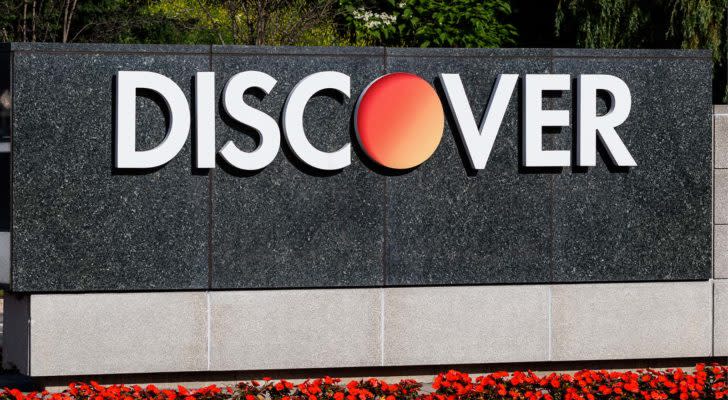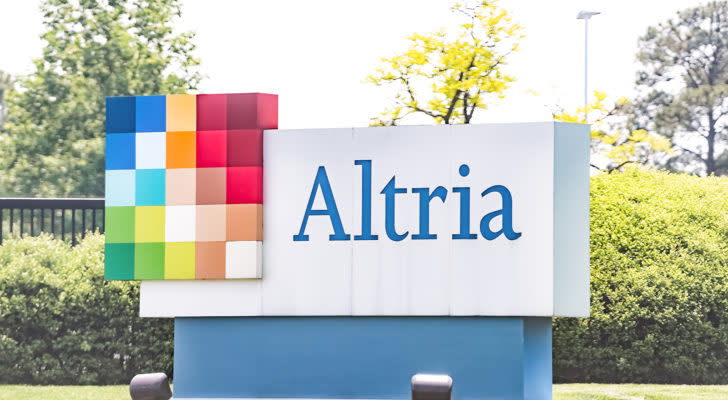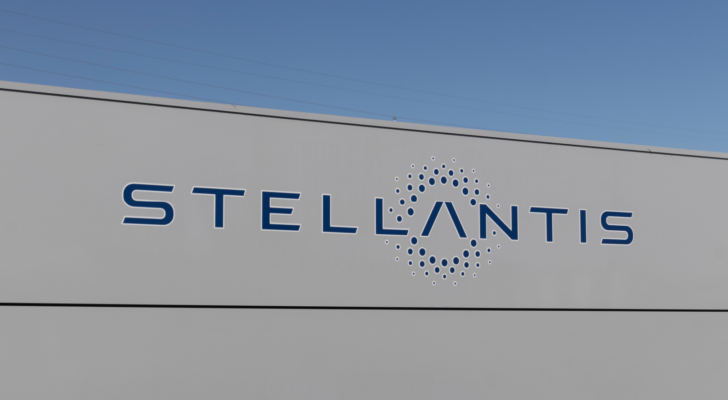The 7 Most Undervalued Large-Cap Stocks to Buy in February 2024
The “Magnificent Seven” stocks may garner the lion’s share of market attention right now, but while there may be strong potential with some of “Mag 7” names, check out opportunities making far fewer headlines, like undervalued large-cap stocks.
Although there are many large-cap value stocks that are “value traps,” or stocks trading at a low valuation that fail to perform well because of growth issues or other types of headwinds, there are stocks that are both undervalued, and that have catalysts in place that could help bridge the valuation gap.
With these stocks, you might win in three ways. First, large-cap value stocks can get re-rated, or bid up to a higher valuation. Second, many times, something like earnings growth can be what drives the re-rating. Shares can also move higher in tandem with the earnings increase.
InvestorPlace - Stock Market News, Stock Advice & Trading Tips
Third, stocks in the large-cap value category typically pay dividends. These payouts can provide an additional boost to total returns.
Below are the seven most undervalued large-cap stocks to buy this month. Let’s take a look at each one, and see why they are each a great opportunity at current prices.
CVS Health (CVS)

Source: Susan Montgomery / Shutterstock.com
Admittedly, it makes sense why CVS Health (NYSE:CVS) trades for only 8.6 times forward earnings. Rising costs continue to affect the performance of the healthcare giant’s Aetna health insurance subsidiary.
Even CVS’s flagship retail pharmacy chain is shrinking in size, because of a variety of factors.
Yet while there is a significant amount of uncertainty regarding CVS stock and future growth, other recent developments suggest better times lie ahead. Back in December, the company unveiled a multifaceted plan to get itself back on track. A further cooldown in inflation could benefit the company across the board.
A resurgence in earnings growth could spark a re-rating for this undervalued stock. While waiting for the rebound, you will also accumulate steady returns via CVS’s dividend. Recently raised by around 10%, to 66.5 cents per quarter, shares currently sport a forward yield of 3.64%.
Discover Financial Services (DFS)

Source: Jonathan Weiss / Shutterstock.com
Discover Financial Services (NYSE:DFS) is another of the undervalued large-cap stocks where market uncertainty may work in your favor.
The shares of this digital banking and payment services giant are being traded at a substantial discount in relation to their future potential earnings.
That is, 2025 sell-side forecasts call for earnings of around $14 per share, with the top end of forecasts calling for earnings of $15.23 per share. This implies DFS stock is trading for as little as around seven times next year’s earnings. Yes, recent results cast doubt about a rapid recovery.
But as the “soft landing” thesis continues to play out regarding the U.S. economy, Discover may experience the earnings recovery expected in the abovementioned forecasts. Even if DFS experiences little in the way of multiple expansion, hitting the top end of forecasts could send this $107 per share stock towards $150 per share.
eBay (EBAY)

Source: ShutterStockStudio / Shutterstock.com
After falling from the low-$80s to the high-$30s per share during the 2022 stock market downturn, eBay (NASDAQ:EBAY) has struggled to bounce back, as investors remain downbeat about the ecommerce marketplace company’s growth prospects.
However, as a result of this pullback and lack of recovery, EBAY stock today trades at a very low valuation (10 times forward earnings).
Although shares have many of the hallmarks of a potential “value trap,” there is a recent development that may signal a path back to higher prices.
Last month, eBay announced major cost reduction plans, including layoffs and a scaling down of its use of contractors.
The resultant cost savings could create a boost to earnings similar to that experienced by other tech companies as of late. Besides helping to drive a recovery for shares, increased earnings may also lead to an increase of EBAY’s dividend (2.38% forward yield).
HP (HPQ)

Source: Ken Wolter / Shutterstock.com
HP (NYSE:HPQ) is another of the undervalued large-cap stocks in the tech sector that has delivered a mixed performance, because of growth-related headwinds.
While demand is robust in areas of tech like AI-compatible data center chips, business and consumer demand for PCs (HP’s bread and butter) has stayed weak.
Fortunately though, HP’s continued slump could over the next year give way to another re-acceleration in demand, with the rollout of PCs with generative AI capabilities. This would likely result in a return to not just satisfactory levels of earnings growth, but a re-rating to the valuation of HPQ stock as well.
Currently, HPQ is trading at a forward earnings multiple of only 8.3 times. Higher earnings in HP’s fiscal year ending October 2025 ($3.67 per share, according to sell-side forecasts), plus a re-rating back to a low-teens forward multiple, may mean major price appreciation ahead for the stock.
Altria Group (MO)

Source: Kristi Blokhin / Shutterstock.com
Over the past two years, investors have soured on Altria Group (NYSE:MO). Investors worry that the pivot to non-cigarette tobacco/nicotine products by smokers will affect Altria’s ability to sustain its current level of earnings. This could hurt MO’s nearly 9.5% forward dividend yield.
Yet while Altria lost billions in its first major effort to “go smoke-free,” as seen in recent results, growth in vaping, plus a solid performance by the company’s smokeless tobacco segment, helped to counter declining cigarette volumes, preventing an earnings decline despite falling total revenue.
If Altria can maintain its high yield, carry on with other “return of capital” efforts (i.e. share repurchases), and make progress in vaping/heated tobacco products, MO stock has the potential to produce above-average returns for income-focused investors.
Stellantis (STLA)

Source: Jonathan Weiss / Shutterstock.com
Netherlands-domiciled Stellantis (NYSE:STLA) is a global automaker. Brands include Chrysler, Dodge, Jeep and Ram in the U.S., well as European auto brands like Fiat, Opel, and Peugeot.
Yes, given that automakers typically trade at a low price-to-earnings ratios, you may question why I’m naming STLA one of the undervalued large-cap stocks.
However, even among automakers, STLA stock is cheap. Shares currently trade for only 3.5 times earnings.
This low valuation may suggest high uncertainty about future profitability, but as a Seeking Alpha commentator recently argued, there are many reasons to be bullish. Merger synergies have resulted in high margins. Stellantis also has strong EV and automotive technology catalysts as well.
Investors have already started to catch on, with STLA rising 39% over the past year, but with plenty in play that give the sentiment shift more runway, now may be a solid entry point.
United Airlines (UAL)

Source: travelview / Shutterstock.com
Airline stocks can trade at low valuations because of the cyclicality of the industry. Yet even for an airline stock, United Airlines (NASDAQ:UAL) may trade at too low of a valuation.
At current prices, UAL stock trades for just 4.3 times forward earnings. This represents a valuation discount compared to this legacy carrier’s peers.
Sure, the fact that United has greater exposure to the fallout with Boeing’s 737 Max 9 planes may be a big reason behind this valuation gap.
However, more recent 737 Max-related news with United suggests this factor may not be a major issue for the company (and for shares) going forward.
Moreover, as air travel demand remains strong, United may be poised to meet or even beat expectations for 2024 earnings. After choppy price moves after its mid-2023, UAL could be set to soon become a high-flier once again.
On the date of publication, Thomas Niel held MO. He did not hold (either directly or indirectly) any positions in the securities mentioned in this article. The opinions expressed in this article are those of the writer, subject to the InvestorPlace.com Publishing Guidelines.
Thomas Niel, contributor for InvestorPlace.com, has been writing single-stock analysis for web-based publications since 2016.
More From InvestorPlace
The #1 AI Investment Might Be This Company You’ve Never Heard Of
Musk’s “Project Omega” May Be Set to Mint New Millionaires. Here’s How to Get In.
The post The 7 Most Undervalued Large-Cap Stocks to Buy in February 2024 appeared first on InvestorPlace.
